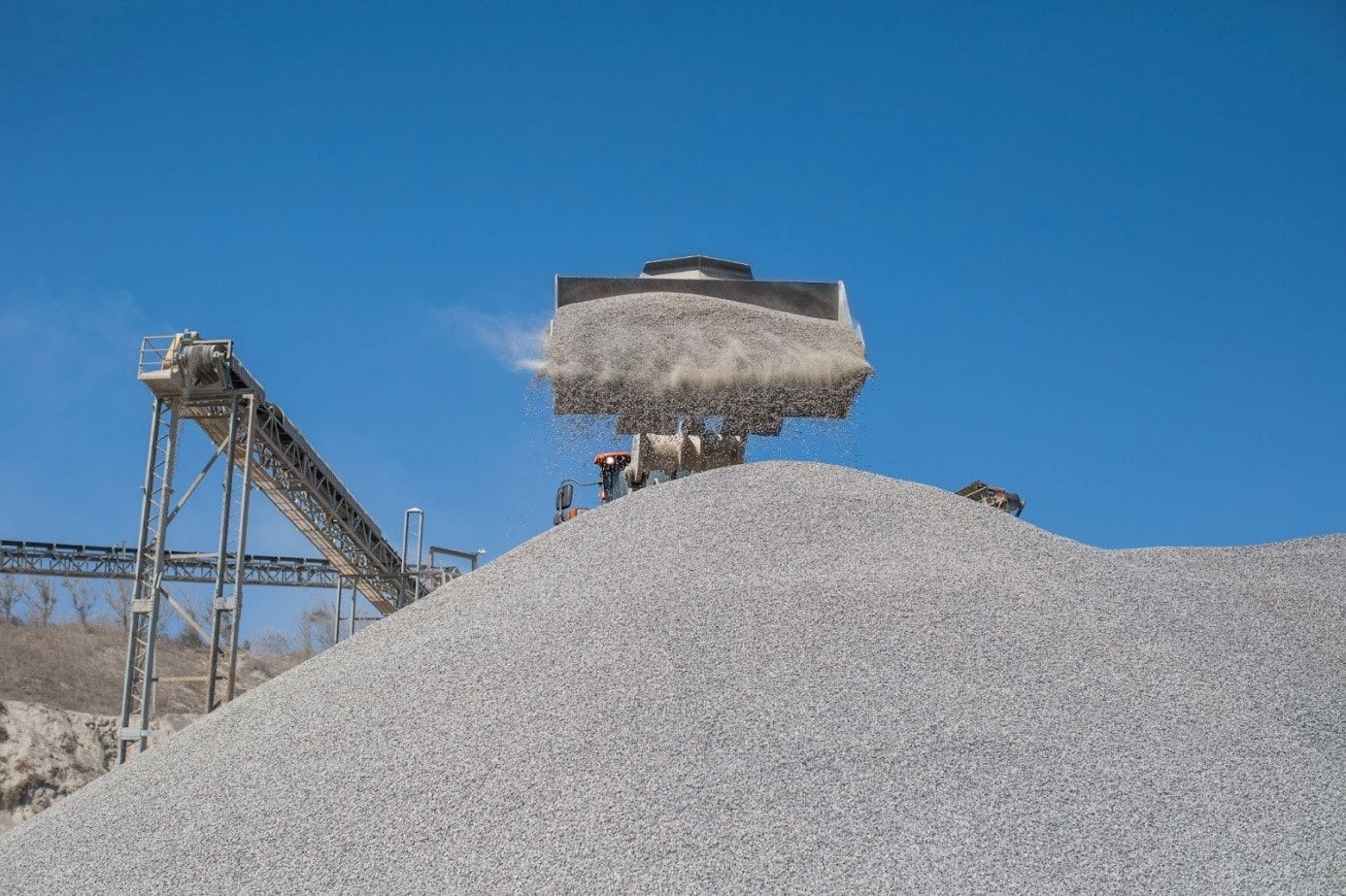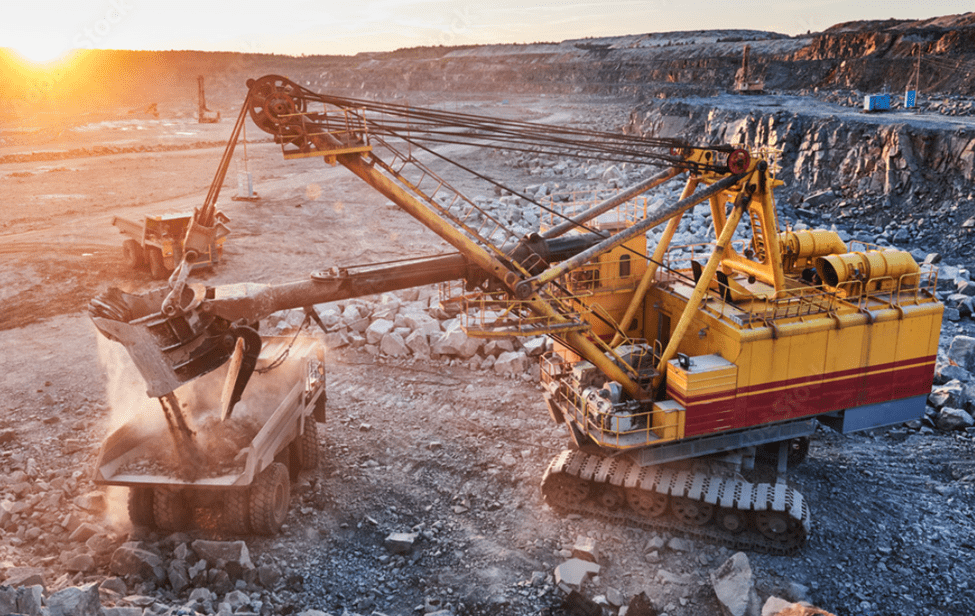Technology is fundamentally altering how businesses work in the digital age. Utilities, oil and gas, energy, manufacturing, and construction companies are all implementing IoT and AI solutions to run their operations more efficiently and sustainable.
The mining industry is under increasing strain as the world population continues to grow. Every sector is adopting new technologies to improve efficiency, achieve operational cost savings, and maintain sustainable growth, and the mining sector is no exception.
The mining industry is turning to IoT and AI to automate key activities and gain a competitive advantage. According to a study, 70% of participants from 100 large mining companies around the world believe that IoT will give them a significant competitive advantage, with 41% recommending it for business process automation and nearly half claiming that it can be used to find cost-cutting opportunities.
Although IoT technology has been around for a long time, the mining industry has been slow to adopt modern technology due to different factors, such as lack of connectivity in remote mine places and risk-averse culture. Thankfully, this appears to be changing as remote site connectivity improves, workforce demographics change and a growing number of companies recognize IoT’s benefits. New technology has the potential to transform mining businesses, boost overall productivity, and have a favorable impact on an organization’s bottom line.
What is IoT in the mining industry?
The Internet of Things (IoT) refers to the expansion of Internet connectivity to include physical devices and ordinary objects. These devices, which are equipped with electronics, Internet connectivity, and other types of technology, can communicate and interact with others over the industrial Internet and be remotely monitored and controlled.
IoT is leveraged in the mining industry for cost optimization and efficiency as well as to improve safety measures and meet artificial intelligence demands.
What is AI in the mining industry?
Artificial Intelligence (AI) is the development of computer systems able to perform tasks that usually require human intelligence, such as visual or sensory perception and decision-making. Artificial intelligence is used daily in things such as self-driving haul trucks, manufacturing robots, chatbots, digitized smart assistants, learning platforms, and weather forecasting systems.
The mining industry is working hard to integrate AI into its processes and critical activities. The combination of IoT and AI enhances the automation and remotization of processes and activities, leading to increased productivity, reduced risks, reduced costs, higher quality, and more sustainable operation, while reducing the need for workers on site and facilitating forecasting, planning and remote working.
Challenges in the mining industry
Mining is a high-risk activity that faces different challenges such as:
- Difficult weather conditions (e.g., dry and windy desert, extremely cold and remote)
- High temperature variations (e.g., < -10C night + 15C day)
- Nearby cities and fragile ecosystems
- Water scarcity
- Geotechnical stabilityVolatile material and acid drainage
- Haul roads building and maintenance
- Hire, train, transport and accommodate workers
- Comply with environmental regulations
- Zero harm and zero waste objectives
- Decarbonization objectives
- Local community relationships
Long-standing difficulties, such as health problems (hearing loss, lung disease, etc.) are still present. Unusual habitats and surface temperatures are exacerbating the situation. Furthermore, as mines become deeper, the probability of a breakdown is higher.
Furthermore, since an increasing number of mines are established in off-grid areas, it becomes more challenging to provide permanent electrical infrastructure to power the mining activities as well as adequate water supply. That is one reason why companies are looking to build scalable microgrids in mines.
Mining activities are not only dangerous but also harm the environment and neighboring communities. Erosion, biodiversity loss, and contamination of surface water, groundwater, and soil are some of the adverse effects on the environment. Aside from this, the mining industry frequently faces substantial obstacles such as shifting commodity pricing, fluctuating global demand, skilled labor attraction and retention, increased safety and security threats, and so on, all while trying to fulfill increasing shareholder return expectations.
Mining organizations must become more efficient, innovative, and creative to keep workers safe, mitigate their environmental footprint, be a good neighbor and remain competitive. Digitalization plays a vital role here since it provides opportunities to improve efficiency and operational excellence.
The advantages of IoT and AI integration in the mining industry
Cost optimization
The primary motivation for companies to use IoT in their mining operations is to boost productivity, reduce costs and improve sustainability . Diggers can use huge sets of data, also known as big data, to find more cost-effective methods of conducting their operations and further develop efficiency along these lines by installing sensors on mining hardware and systems that monitor equipment.
Sensor deployment can also reduce operational downtime by a substantial margin, since companies can use the data gathered to teach their gear and prevent damage. The automatization and remotization of different activities reduce labor requirements, increase worker productivity and safety, which leads to substantial cost savings opportunities and productivity gains.
Predictive mining maintenance
Preventive maintenance costs six to ten times less than reactive maintenance and avoids production halts, helping to assure the operational continuity of the mine. Checking each aspect of an activity becomes easier with a fully connected network, resulting in more prominent functionality and security. It entails quick detecting wear and tear on critical pieces of equipment and forecasting when repairs or maintenance are required.
Greater control
Administrators can acquire valuable insights in real time and program algorithms to help them make better decisions by monitoring, acquiring, and analyzing data from specific mining equipment. IoT aids administrators in understanding when there is a breakdown or decrease in performance, allowing them to respond promptly and appropriately. AI helps to automate part of the decision-making process and support decision-making processes.
Each rock crushed is money in the bank in the mining industry. Administrators can’t bear having their systems down for a few hours while they wait for an engineer to arrive, as it can result in a significant loss of productivity. While IoT and AI can help reduce downtime, problems will arise, and when they do, every second matters in the race to fix them. Nonetheless, the IoT and AI can assist in this area as well.
Reduced pollution levels, H2O and CO2 footprint
The optimization and reorganization of activities and the displacement of the workforce not only saves money, but also reduces energy consumption, water use and CO2 emissions.
For example, AI and IoT can help us to optimize dust control measures for haul roads and crushers by ensuring we apply the right dose of dust control additives and water at the right time, the right way. This will not only improve dust control on the mine site, but will reduce associated water, additives, energy, manpower and CO2 emissions by 50%. In the particular cases of the haul roads, it will as well reduce the risk of trucks hydroplaning and road maintenance frequency, avoiding accidents, and loss of productivity.
Improved safety
Although innovation has managed to eliminate some of the risks of the mining industry, there are still some. Since the sensors receive information in real time and predict any faulty equipment or where difficulties may occur .. This allows improvements to be made before something goes wrong. In addition, in the event of an accident, a centralized system powered by IoT can allow the implementation of the best evacuation procedures and rescue operations.
ABC Dust’s Dust Master System (DMS®) offers a wide range of state-of-the-art dust suppression solutions for dust control in many industries such as mining, forestry, and construction. DMS dust suppression products are made up of proprietary mixtures of nano polymers, enzymes, stabilizing agents, and nanomaterials of high strength and sustainability, all designed to ensure safety. The dust suppressant products offer cost-effective dust control, dust suppression, and soil stabilization solutions optimized for different soil types, traffic conditions, and weather.
The future of the mining industry and the risk to mitigate
Mine site connectivity is one of the main challenges for mine sites digitalization. As the world gets covered with more and more satellites providing better geolocalisation and telecommunications, as well as private telecommunication networks become less expensive, and the adoption of 4G LTE and 5G technologies reduce latency times and accelerate the adoption enhances the use of IoT and AI in mine sites.
The importance of connectivity and utilizing technology is undeniable. Mining output is increased by 15 to 20% with driverless technology, while fuel and maintenance costs are reduced by 10 to 15% and 8%, respectively. It also vastly enhances mining security. However, these Internet-connected technologies expose the mining industry to new cyberattack vectors, which must be mitigated through adequate internal controls and public-private collaboration to protect cybersecurity.





